If you have car trouble, you talk to a mechanic.
If you are feeling unwell, you talk to a doctor.
If you need running advice, chances are, you end up in a running store.
We are a little skeptical of running stores, especially when it comes to gait analysis as your running store might end up recommending running shoes that will make your running form worse.
Which will lead to more injuries and the runner blues.
Many runners are told they will need custom orthotics for flat feet or very high arches to fix the problem, but the custom orthotics cost can be very high.
Is there a way to fix or help runners with flat feet, high arches, runner’s knee, or plantar fasciitis, amongst other injuries without spending lots of money?
They often come with a hefty price, and the cost of custom fit orthotics usually not covered by health insurance.
Today, we’ll take a look at the science behind custom orthotics and whether they are worth it for runners, especially when you consider how often some custom made running shoe orthotics need to be replaced.
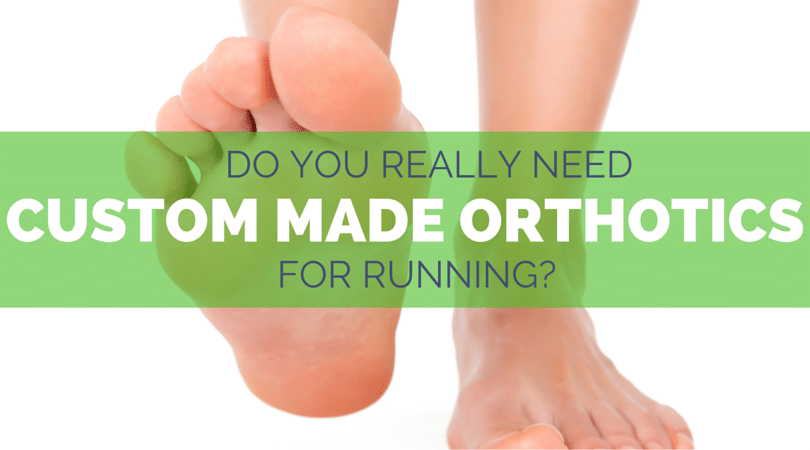
Is Under or Over Pronation Really the Cause of Your Running Injuries?
Custom orthotics have quite the colorful scientific record.
They’ve been around for quite some time, so podiatrists have developed a variety of theories on which to base the design of a particular orthotic.
Here’s the deal:
For a long time, orthotics were centered around the “pronation” paradigm, which, in short, held that overpronation (an inward rolling of the ankle during the running stride) was the root cause of many running injuries.
Orthotics incorporated a built-up arch and a slanted heel that tilted your foot outward.
The idea being that the built-up material would prevent the foot from pronating, and hence prevent or treat injuries related to overpronation.
Here’s where it gets interesting:
In the experience of many podiatrists and sports medicine doctors, they were successful.
Runners came in injured, were prescribed a custom orthotic, and recovered.
But there were ruminations of trouble when biomechanics labs attempted to quantify the degree to which a particular feature (say, a slanted heel) on a custom orthotic altered a runner’s gait.
Experiments were producing different results, and generally not agreeing with the predictions of the pronation theory.
What was the bottom line?
Studies of running injuries were not showing a clear connection between pronation and injury.
Custom made orthotics to help recovery for injured runners
These problems came to a head when Benno Nigg published a now-widely-cited paper in 2001 detailing the evolution of his laboratory’s work on pronation and orthotics.
Nigg detailed a series of studies he carried out which illustrated that individual runners had differing responses to the same orthotic features.
Check this out:
While a reinforced arch and a slanted heel reduced pronation in some runners, others had little or no change, and some even exhibited increased pronation.
It get’s worse:
Using bone pins and X-ray imaging, Nigg and his colleagues found that there is little difference in skeletal movement between shoes with standard inserts, shoes with custom inserts, and no shoes at all!1
But:
Several studies were showing a beneficial effect of custom orthotics.
A 1991 survey of 347 runners who used custom orthotics after suffering an injury found that 75% reported complete or near-complete recovery, and 90% continued to use their inserts after recovery.2
A more recent investigation in 2011 similarly found that custom orthotics reduced pain and were well-tolerated among most runners.3
The evidence when it comes to specific injuries is less clear—they might hasten recovery from knee injuries, for example, but the overall recovery rate is similar between runners with knee injuries who receive custom orthotics and those who do not.4
Are custom orthotics worth it for runners?
Nigg proposes that an individual runner’s body has a “preferred joint motion path,” which the body will always try to follow, regardless of the footwear condition.
Here’s the deal:
If an orthotic encourages this preferred path of motion, the body won’t have to work as hard, and muscle activity will decrease.
But if an orthotic (or shoe, for that matter) opposes this preferred path of motion, the body will attempt to overcome it by activating muscles more strongly.
What does that mean for runners?
If a runner’s preferred path of motion at the ankle involves some degree of overpronation and a custom orthotic is opposing that, the body will activate the muscles of the lower leg to reinforce the preferred path of motion.
Most likely causing you pain somewhere else.
This explains why changes in pronation, for example, are small and nonsystematic when comparing groups of runners using the same custom insert.
Under Nigg’s theory, the body will respond to a “good” orthotic by subjectively feeling more comfortable when walking and running in it.1
Custom orthotics and running injuries
Nigg’s theory was put to the test in a 2001 study of military recruits.
Instead of giving each recruit a custom-molded orthotic as is typical of this type of study, Nigg and his colleagues provided all 206 recruits with six options, which varied in heel height and cushioning.
Each recruit selected the most comfortable insert.
Regardless of which shoe insert the recruits chose, they all had a lower incidence of injury during basic training than recruits who were assigned a control insert.5
How To Know if Running in Custom Orthotics Will Work for You
Certainly, there are still some universals when it comes to custom orthotic design.
A runner with chronic pain under his first metatarsal head will almost certainly benefit from a shoe insert which relieves pressure on this area.
Fortunately:
The field of podiatry is (slowly) moving away from evaluating every foot relative to a “normal” one and instead focusing on the actual cause of tissue stress.
If your doctor does recommend a custom insert, don’t be afraid to try a high-quality over-the-counter orthotic (like Dr Scholls, SuperFeet or PowerStep insoles) at first, since they aren’t nearly as expensive as a custom orthotic, and at least one study has indicated that they may work just as well as a custom orthotic.6
How do you know if a custom orthotic is right for you?
Listen to your instincts:
Comfort remains your best indicator of whether or not an orthotic is going to work for you.
If you have a foot or lower leg injury and decide to give an orthotic a shot, it should feel better, not worse, than running without an orthotic.
If an orthotic feels wonky while walking or running, it’s unlikely that it will help prevent future injuries, and you should consider spending your time and money on strengthening your hips, as strong hips and glutes are the best way to prevent injuries in the future.
RunnersConnect Bonus
Download your FREE Hip Strengthening Exercises Guide.
Download a video version of the 5 most effective hip exercises for runners. You’ll get full descriptions on how to perform and a video to help guide you.



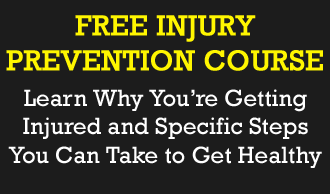

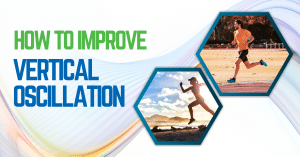
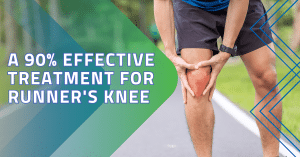
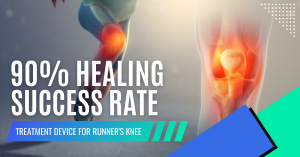

28 Responses
I recently made the mistake of allowing a physical therapist to insist on orthotics to help me deal with an Achilles issue (and, in fact, didn’t do well enough to insist that the only possible reason I’d need orthotics is to correct a leg length discrepancy, which probably doesn’t need corrected in the first place). They were horribly uncomfortable from the start, making my Achilles worse (and the PT said he “expected that”?) and causing pain in my IT band. And this was just from walking around in them. There was no way I could bring myself to run in them. And, as you suggest, insurance didn’t cover it. Biggest waste of money I’ve ever spent in regards to running.
Thanks for the comment, Greg. I thought of you when I read the part in the article about orthotics needing to be comfortable to work – I am glad you had the foresight not to run in them. Sorry you had such a rough experience with the orthotics and had to pay out of pocket. At least you now know that orthotics aren’t the right approach for you and can avoid them (and any PT or doctor who insists on them) in the future. Hope the achilles is coming along.
First off, a LLI or leg length discrepancy is a very common disorder and does in fact create a mechanical distortion of the entire kinetic chain. Think about it…would you run with only one shoe on? Of course not. Why? Because it would create an unlevel pelvis and unnecessary spine and entire body compensations due to the force passage up through the feet and down through the body due to gravity. This would result is the abnormal remodeling of bone and soft tissue over time in accordance with Davis’ Law and Wolff’s Law. With that said, there is only 1 specific way to measure a LLI and that’s via a Fergusons Sacral Base X-Ray. This is an xray taken that allows a measurement to be made of the sacral base. The sacral base is either level or unlevel and if it’s the latter you’ve got a problem, i.e, you’ve got an unlevel pelvis.
Secondly, unless the 3-D impression of a clients foot is captured in a non-weight bearing position, calibrated to flex specific to each foot’s Gib Test rating and the individuals body weight, it’s useless. Seriously, would you make an impression of your foots deformed posture and then an orthotic to support that deformed position? Of course not. Let’s not forget that the true test of a “custom” orthotic is when the foot is moved through supination that full contact remains. In other words, if you hold your orthotic against your arch as you raise your heel 45 degrees from the ground, unless your orthotic maintains full-contact, it’s useless. Unfortunately most folks confuse a truly custom foot orthotic with a pre-fabricated, made-in-advance, pointless shoe insert instead of one created from an accurate 3-D impression of the client foot that is calibrated to match their weight, foot flexibility, and activity level! Additionally, very few “custom” orthotics are not made completely from scratch, most likely made with generic starter plates, add-on pads and/or arch filler…truly failing to meet the definition of custom.
Thank You for the interesting article. We do make custom orthotics at Foot Solutions if you are ever looking for a pair.
It may be the brand of orthotic. Take a look at Foot Levelers. They make a runner’s specific custom orthotic called XP3 (https://www.footlevelers.com/orthotics/xp3).
I had an experience that convinced me my orthotics were very effective. After wearing them for several years, they broke and I thought perhaps they really weren’t necessary, so I ran without them – over a period of a year I suffered a patellar tendon tear an plantar fasciitis. So I got my orthotics replaced and since wearing them again the last 2 years, I’ve had no major problems. I’ve got a fairly large leg length discrepancy but a neutral gate.
Thanks for sharing your story, Julia. I am in a similar situation – I have a short achilles and my foot actually “snaps back” after normal pronation, which puts a lot of stress on my calves. I can’t run for more than a few miles with regular shoes, yet I can run 140mpw (yup, that number is right with my orthotics in. Just goes to show that there is no “absolute” correct way to run for everyone. We have to be adaptable and listen to our body.
with my orthotics in. Just goes to show that there is no “absolute” correct way to run for everyone. We have to be adaptable and listen to our body.
Perhaps that is what is going on with my calves…. I have plantar fasciitis and overpronate. I do have custom orthotics, but have a feeling they are not made correctly, and I have been having some calf problems (as well as hip). Think I will be visiting a sports chiropractor who specializes in diagnosing running problems.
Hi Barb, thanks for reaching out. It will be good for you to check with a sports chiropractor, who can hopefully give you a better idea of what is going on. In the meantime, you should take a listen to this podcast episode, you will probably enjoy it https://runnersconnect.net/rc43 This will hopefully unlock some of the mystery for you, especially when it comes to “overpronation”. Hope this helps, let us know if we can do anything else to help!
Thanks you for sharing. I recently got foot orthotics (http://www.cliniquedupied-footclinic.ca/en/orthotics.html) and I have noticed a difference but not a vast improvement. Luckily my insurance did cover it but I don’t know if it was worth the price.
It’s interesting the differing opinions on this. A year ago I had a severe lisfranc injury involving breaks and dislocation of my midfoot, after getting my cast off I was fitted with orthotics with more support under my metatarsals. At the beginning they made a world of difference with normal walking. Without them my whole foot would ache. I’m now at a point deciding whether I need to continue wearing them or try going without. I wear them exercising and when i stand at work all day. Some people say to keep them and others that they are bad. I guess ill just try and find out! Thanks for the article
I had a pair of orthotics customer made in December, not to cure any injury, simply my Physio recommended if I wanted to up my mileage getting a good orthotic would prevent future future injury. After 6 weeks of not running in them just walking I started to run only small distances as prescribed. One month in my ankle started to cause me pain. After being prescribed rest the problem 8 weeks on is still there, plus I now have knee pain. The Physio who got his in house orthotic specialist to design the insert now thinks I need a cortisone in the ankle to get the ankle fit again but I’m now wondering if this ankle pain that won’t go away, plus the knee pain are actually caused by the orthotic so should I can them and just try a period without them, could they actually be the cause. May I add both the Physio and orthotic specialist are very we’ll known in professional sport and treat top class athletes but could it be I’m just not suited to orthotics and my body was fine as it was?
I have had a year of pain, with doctors thinking it was gout, x-rays, blood tests, anti inflamatories etc. Because my ankle swelled up a few months after I started using my `custom` made orthotics. 2 chiropodists work at that place but then I compared my other pair I`ve been wearing since 2002 and realized the shape is completely different.
I am trying to get my money back and very upset that I paid 1000$ for 2 pairs of junk that gave me pain.
I went back to wearing my 2002 ones and the pain is slowly going away. Therefore I recommend you go back to do what you were doing before the pain appeared and see what happens. A doctor once told me that cortisone injections are bad for me and preferred to treat symptoms in other ways so I would stay away from that.
The problem with many custom orthotics is that they try to correct the pronation by increasing the arch pressure. A persons body reacts to this by staying on the heel as long as possible and then “vaulting” over the midfoot, this often leads to patella tendon pain ( just below the kneecap). The other thing your body may do is avoid the arch altogether by riding on the outside (lateral) edge of the foot, this often is the cause of hip and or IT band pain after getting orthotics.
As a person who has been making custom orthotics for over 25 years I can assure you that they need to be comfortable. My golden rule is quit simply If it’s not comfortable it’s wrong get in to see me, if it is painful then you waited to long to come in to see me.
I am not a salesman, I encourage customers to shop around. I tell them to be sure the orthotics are guaranteed (4 months no questions is my policy) Make sure you are not going to get co-payed to death if there are issues ( I don’t charge for adjustments) and be sure they will be there when things change because they will (open ended adjustment period) But most importantly you shouldn’t have to ween into them, yes take it easy at first so you can find any problems before they cause you a problem. After all you can get used to a tack in your shoe if you take enough time….that doesn’t mean it is right.
Hi Neil, thanks for sharing. Great insights from someone who knows it best. That is definitely a great rule, we believe comfort is the number one deciding factor in any kind of footwear choice. Thank you for being honest, and being real with the readers. This will definitely help runners when considering orthotics in the future.
I had plantar fasciitis in my left foot last year and going to a chiropractor helped get rid of it. Earlier this year I got PF in my right foot. I again went to a chiro and it went away but came back. Only recently can I say that there is no pain while running or afterwards.
I wanted to know what was causing it. So I went to a podiatrist who recommended I get custom orthotics. They scanned my feet by walking on a rubber mat which produced a pressure point image. The orthotics would be made from this.
At the same time I saw a chiroprator for a gait analysis. She stated that my problem was weak hips and weak upper butt muscles (not the technical term). She prescribed some exercises for me to do which would strengthen my butt and improve my balance. It has been almost 3 weeks and I can sense the difference. My balance has improved. Still no foot pain.
The other day my custom orthotics came in. I have worn them the past couple of days. 4 hours then 6 hours. They are not as bad as I had imagined but there is noticeable arch support. They assured me that these would be the perfect platform for my feet to run on.
After reading your article and others, I am really worried about trying to run in them. Right now everything seems to be going good by using the exercises.
What to do ? How can I know when to stop using them ? Or should I even try ?
I have ordered a pair of custom arthotics due to getting pain in my hip and groin area in the past 6 months, also all my running shoes wear on the outside after only 120 miles, some of my insoles in my right shoe even have holes in them on the outside, Physichal therapist says my left leg is 10mm longer than my right and that i my left leg isnt straight, interestingly a lot of my problems in the past 12 months have been on my left side. hoping they will be a success.
It will be interesting to see what happens Darragh. Please let us know how it goes!
Hi I got custom orthotics made cost me €280… had to go back get right leg orthotic reshaping again as was causing knee problem….now a corner is appearing on the outer knee cap and causing pain when squatting…I’m trying to build up my legs after rupturing both Achilles tendons over the past five years…..very frustrated
Hi Eoin, sorry to hear that, must be very frustrating, and you see that we are rather skeptical when it comes to this. You may want to check out our ultimate guide to achilles injuries, this may give you some tips you may not have heard of to continue to strengthen those areas in your rehab phase. Let us know if we can help with anything else. Thanks for sharing your story. https://runnersconnect.net/running-injury-prevention/achilles-tendonitis-and-insertional-achilles-tendinopathy-in-runners/
Oh, I know how it feels to be going through foot pain. With my issue of over pronation the orthotic specialist referred to me of getting a Dr. Scholl’s trainin shoe. Mostly to support the ankle and heel of my left foot that was having the main problem. http://www.chinookcentrepodiatry.ca/en/products_and_services.html
Thanks for sharing Corey, did you find that it helped?
Orthotics come in all shapes and sizes, molds materials etc. To say they don’t work for because they didn’t work for someone with the same injury is too simplistic. The same goes the other way too.
An orthotic should designed to offload the damaged structures or structures under excessive load. If it is designed poorly and not with the correct placement of support it will not work, will be uncomfortable and may create further injuries.
Thanks for your input Andrew. You will probably enjoy our podcast episodes where we discuss this in detail. You can listen here https://runnersconnect.net/rc71 Let us know what you think!
795223 139230 هندسة نت was excellent 768183
I recently went to an Ortho and a Sports Chiropractor for my posterior tendon pain. I was told to give regular orthotics (SuperFeet) a try before getting custom orthotics.
Obviously cheaper, but was curious if anyone else had success with this? I pronate and it was suggested to give these a try to help with arch support that will in turn help with the posterior tibialis tendon pain along wit stretches/exercises.